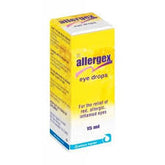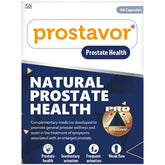Breast abscess
Introduction
A breast abscess is a painful infection brought on by bacteria. The type of bacteria that most frequently produces breast infection is Staphylococcus aureus. Bacteria can enter through a crack in the skin of the breast or on the nipple. The resulting infection, called mastitis, invades the fatty tissue of the breast, leading to swelling and pressure on the milk ducts. An abscess is a hollow space in the breast that becomes filled with pus from the infected milk ducts. A breast abscess can develop in the presence of severe mastitis.
Breast infection can affect all women but occurs most often in women who are breastfeeding. A small percentage, 2% to 3%, of breastfeeding (lactating) women typically experience mastitis. In lactating women, an abscess can be successfully treated with antibiotics, but usually also requires surgical drainage. Your health care provider may tell you to temporarily stop breastfeeding if you have an abscess.
In women who are not breastfeeding, an abscess is generally considered a benign lesion of the breast. Mastitis without abscess can be treated with antibiotics.
Seek prompt medical care if any portion of the breast becomes reddened, tender, swollen or hot and also if the lymph nodes in the armpit become tender or swollen. Seek immediate medical care (call 911) if you are breastfeeding and develop the following symptoms suggestive of a widespread infection:
- Confusion or loss of consciousness for even a brief moment
- Difficulty breathing or rapid breathing
- Dramatic decrease in urine output
- Fainting or change in level of consciousness or lethargy
- High fever (higher than 101 degrees Fahrenheit)
What are the symptoms of breast abscess?
Symptoms of breast abscess include pain and swelling in the breast, fever and nipple discharge. The severity of the symptoms can vary.
Common symptoms of breast abscess
The most common symptoms of breast abscess include:
- Breast engorgement (swelling)
- Breast pain
- Itching
- Nipple discharge
- Nipple tenderness
- Swelling, warmth and redness of the breast tissue
- Tender or enlarged lymph nodes in the armpit on the affected side
Symptoms that might indicate a serious condition
In women who are not breastfeeding, the presence of an abscess may be a symptom of new-onset diabetes or an uncommon type of inflammatory cancer. In rare cases an abscess can result in a body-wide infection (sepsis, a life-threatening bacterial blood infection) if the infection spreads to the bloodstream. Women who are breastfeeding may experience symptoms that can make it too painful to nurse. Seek immediate medical care (call 911) if you, or someone you are with, have any of these serious symptoms including:
- Confusion or loss of consciousness for even a brief moment
- Difficulty breathing or rapid breathing
- Fainting or change in level of consciousness or lethargy
- High fever (higher than 101 degrees Fahrenheit)
Causes
What causes breast abscess?
Breast abscess is caused by a bacterial infection. The most common type of bacteria involved in a breast abscess is Staphylococcus aureus. Bacteria enter through a scratch in the skin or a tear in the nipple. The resulting infection, called mastitis, invades the fatty tissue of the breast and leads to swelling and pressure on the milk ducts. An abscess, or painful, pus-filled lump, can develop in the presence of severe mastitis.
What are the risk factors for breast abscess?
A number of factors increase your risk of developing breast abscess. Not all people with these risk factors will develop a breast abscess. Risk factors for breast abscess in women who are breastfeeding include:
- Not staying on a consistent feeding schedule
- Pressure on the milk ducts from a too-tight bra
- Skipping breastfeeding sessions
- Stress and exhaustion in new mothers
- Weaning the baby from breastfeeding too quickly
Risk factors for breast abscess in women who are not breastfeeding include:
- Being of child-bearing age
- Being overweight
- Having a history of previous breast abscess
- Inflammatory breast cancer (a rare type of breast cancer)
- Smoking or other tobacco product use
Reducing your risk of breast abscess
If you are breastfeeding, you may be able to lower your risk of breast abscess by:
- Breastfeeding often or expressing milk manually with a pump
- Preventing irritation or cracking of the nipples
If you are not breastfeeding, you may be able to lower your risk of breast abscess by:
- Avoiding use of tobacco products
- Maintaining a healthy weight
- Preventing irritation or cracking of the breast skin and nipples
Treatments
How is breast abscess treated?
Treatment for breast abscess begins with seeking medical care from your health care provider. An abscess can generally be diagnosed based on your description of symptoms and a physical exam by your health care provider.
Your health care provider may choose to administer tests such as a white blood cell count (WBC). A WBC test will measure the extent of the body’s immune reaction. For women who are breastfeeding, a sample of milk from the affected breast may be tested to determine the organism causing the infection.
Treatments and antibiotics used to treat breast abscess
Broad-spectrum antibiotic medications used to treat breast abscess include:
- Cephalosporins, such as cefazolin (Cefazil) or cephalexin (Keflex)
- Erythromycin (E-mycin, E.E.S.)
- Penicillins, such as penicillin G potassium
There has been a significant rise in the number of community-based (outside of the hospital) antibiotic resistant infections. Your doctor will likely perform laboratory culture testing the help determine the best antibiotic to use for you.
Ultrasound-guided aspiration of the abscess with the use of a sterile needle is the preferred treatment, unless there is overlying skin damage or recurrence of the breast abscess. In this method, ultrasound imaging pinpoints the location and depth of the abscess. A needle is then inserted into the abscess and the pus is drained, or aspirated, through the needle. Ultrasound-guided aspiration is less invasive than surgical drainage.
Surgical drainage of a breast abscess involves making a small cut in the abscess lump. The pus inside the abscess is broken up and washed away. Your health care provider may leave a small drain in the incision to release any additional pus. The incision will be protected with a bandage to keep the area clean and dry. Your incision may not be sewn closed in order to let it heal from the inside to the outside.
What you can do to improve your breast abscess
Follow your health care provider’s instructions and take all antibiotic medications as prescribed. If you are breastfeeding, you can speed your recovery by:
- Alternating between taking warm showers and applying a cold compress to the affected area
- Applying a warm, moist compress to the affected area several times a day
- Maintaining a regular breastfeeding schedule or expressing milk manually with a pump
- Weaning your baby slowly from breast feeding over several weeks
If you are not breastfeeding, you can speed your recovery by:
- Engaging in proper hygiene to keep skin healthy
- Moisturizing nipples to prevent drying or cracking
What are the potential complications of breast abscess?
Complications from breast abscess can include chronic infection, scarring, constant pain, and disfigurement. For women who are breastfeeding, a breast abscess may prevent them from continuing to nurse. Women who are not breastfeeding may experience chronically swollen and painful breasts.
You can help minimize your risk of serious complications by following the treatment plan you and your health care professional design specifically for you. Complications of breast abscess include:
- Chronic infection
- Chronic pain
- Disfigurement and scarring
- Organ failure
- Sepsis (life-threatening bacterial blood infection)
- Best British Online Pharmacy
- Breast abscess
- Breast abscess myths
- Complication of Breast abscess
- Diagnosis of Breast abscess
- How is Breast abscess treated?
- Medicine for Breast abscess
- Remedies for Breast abscess
- Support for Breast abscess
- Symptoms associated with Breast abscess
- Top 10 UK Pharmacies
- Treatment for Breast abscess
- What causes Breast abscess
- What is Breast abscess
- Where can I buy medicine for Breast abscess in the UK
- ZimSeller Pharmacy



















